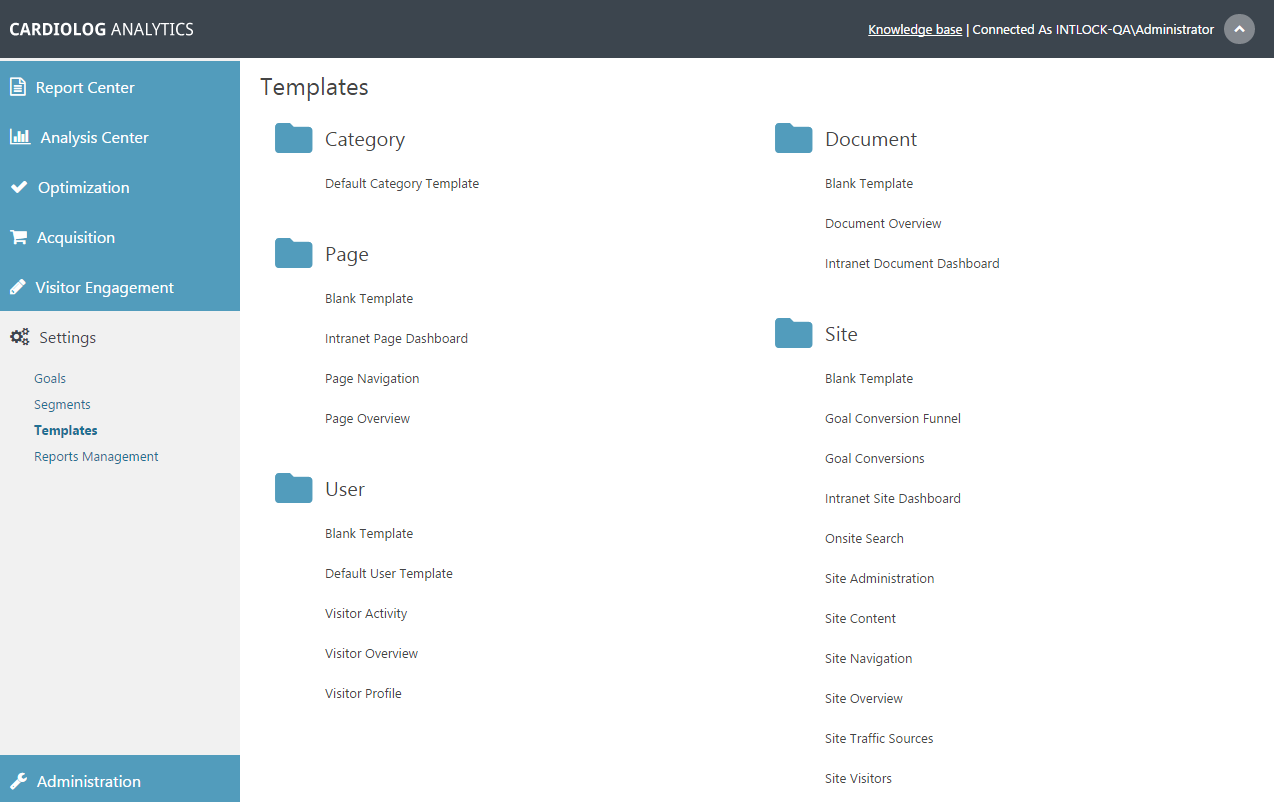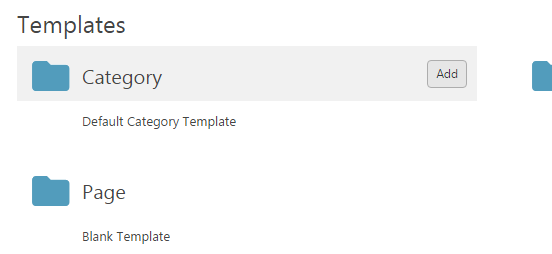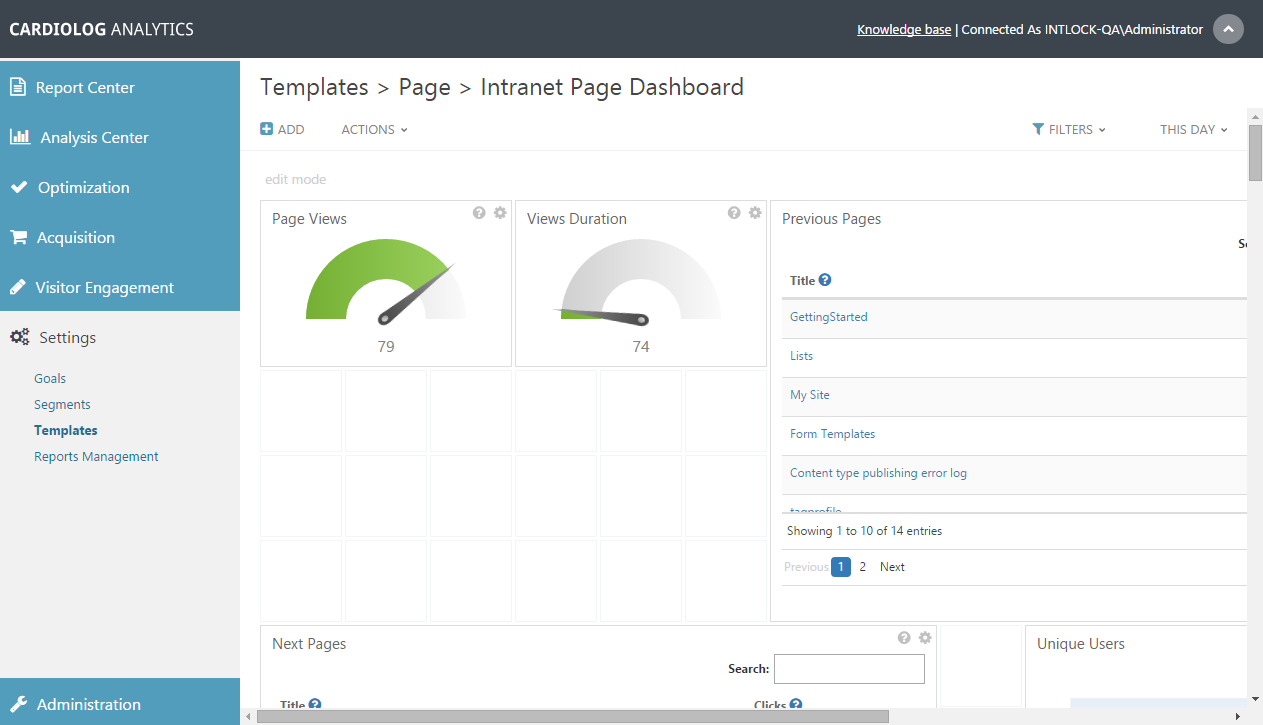Page History
Contents
- Creating templates
- Displaying real time data from within your SharePoint portal
...
A user with the Analyst or Administrator role in CardioLog Analytics can add templates to the various item types within the
| Table of Contents |
|---|
Report Templates Main Window
| Anchor | ||||
|---|---|---|---|---|
|
Analysts and Administrators can add templates for a variety of item types within all monitored environments.
CardioLog Analytics report templates are based on system item types. For example, to create a report template for SharePoint sites, select the Site item type.
Once a template has been made for a specific item type, that template will only appear under that section.
To determine your an item type, see the Entity Type in the item properties (In the Navigation pane, under Analysis Center, click an item in Object Explorer and then select Properties) in item properties.
- In the Navigation pane, under Settings, click Templates to view the system item types.Click an item and select Add.
Add Templateall templates organized by item type. - When you hover over an item type, an Add button will appear. Click Add.
Add Template Button
- In the Add Template dialog, enter the template name in the Name text box and then select the number of columns for the template.
- To base the If you would like to base your new template on an existing template , select a template one from the Based Template drop down list.
- Click Save.
- Your new template will now be listed under the item type.
Add Template dialogDialog
| Anchor | ||||
|---|---|---|---|---|
|
- To edit a template, click hover over it and select Edit. When a template is in Edit Mode, you can add widgets to it.
Template Actions - Click Add in the Top Toolbar, or click any blank space in the template where a plus sign ( + ) appears, and select a widget to add to the template (for a A complete list of available widgets, see report widgets can be found in the Reports Gallery).
- To delete a template, click it hover over its title in the Templates main window and select Delete.
- To publish your template for report drill down and for display in the SharePoint "Site Actions" menu, click your template and select Publish. For more information about data drill down, see Data Drill downDrilldown.
- If you would like to save your template but make it unavailable for use, select Unpublish.
Template in Edit Mode
...
...
Displaying Real Time Data From Within Your SharePoint Portal
- After installing the "CardioLog Usage Reports" SharePoint Feature, each SharePoint page displays (under "Site Actions") a link to CardioLog Analytics usage reports, accessible from the Site Actions menu.
- Select a desired report template in order to run a real time usage report for the page you are visiting. The report is displayed in a new browser window. The default report is based on the "Site Overview" template and displays real-time data for today.
For more information see see: View CardioLog Analytics Reports from SharePoint's "Site Actions" Menu - The system administrator can create published report templates for pages (objects) in the portal. These templates will be available from the portal pages.




